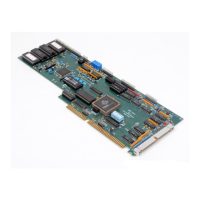112 • Chapter 7 Application Programming DMC-1000
Using the PF Command to Format Response from
Interrogation Commands
The command, PF, can change format of the values returned by theses interrogation commands:
BL ? LE ?
DE ? PA ?
DP ? PR ?
EM ? TN ?
FL ? VE ?
IP ? TE
TP
The numeric values may be formatted in decimal or hexadecimal* with a specified number of digits to
the right and left of the decimal point using the PF command.
Position Format is specified by:
PF m.n
where m is the number of digits to the left of the decimal point (0 thru 10) and n is the number of
digits to the right of the decimal point (0 thru 4) A negative sign for m specifies hexadecimal format.
Hex values are returned preceded by a $ and in 2's complement. Hex values should be input as signed
2's complement, where negative numbers have a negative sign. The default format is PF 10.0.
If the number of decimal places specified by PF is less than the actual value, a nine appears in all the
decimal places.
Examples:
:DP21 Define position
:TPX Tell position
0000000021 Default format
:PF4 Change format to 4 places
:TPX Tell position
0021 New format
:PF-4 Change to hexadecimal format
:TPX Tell Position
$0015 Hexadecimal value
:PF2 Format 2 places
:TPX Tell Position
99 Returns 99 if position greater than 99
Removing Leading Zeros from Response to Interrogation
Response
The leading zeros on data returned as a response to interrogation commands can be removed by the
use of the command, LZ.
Example - Using the LZ command
LZ0 Disables the LZ function
TP Tell Position Interrogation Command
-0000000009, 0000000005, 0000000000, 0000000007
Response from Interrogation Command
(With Leading Zeros)
Artisan Technology Group - Quality Instrumentation ... Guaranteed | (888) 88-SOURCE | www.artisantg.com

